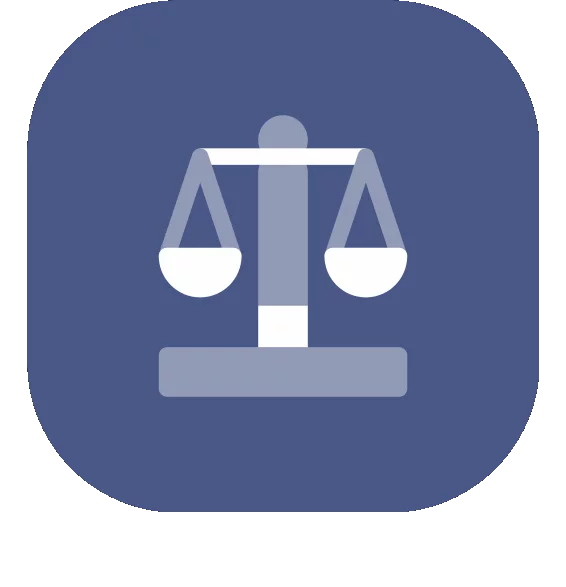Maximize Crawl Budget SEO: Boost Site Indexing Efficiency
Did you know that the efficiency with which search engines crawl your website can greatly impact your online presence? In this article, we examine the intricacies of […]
Did you know that the efficiency with which search engines crawl your website can greatly impact your online presence?
In this article, we examine the intricacies of optimizing your crawl budget, a key concept in Search Atlas and LinkGraph SEO strategies that could make or break your site’s indexing performance. You’ll discover practical ways to assess your current crawl efficiency, avoid common pitfalls that waste your budget, and learn how to build a site architecture that search engines can navigate effortlessly.
Implementing these strategies will ensure that your website’s content is found and ranked by search engines such as Google. Here, we will provide guidance on ongoing monitoring and maintenance, giving you the tools you need to maximize your crawl budget and keep your URLs in good standing on the internet.
Key Takeaways
- Proper crawl budget management is critical for site indexing and search visibility.
- Avoiding duplicate content and redirect loops is essential for maintaining crawl efficiency.
- Regularly updating and optimizing sitemaps can significantly improve site indexing.
- Monitoring server performance and addressing errors can prevent wasted crawl budget.
- Periodic site audits are necessary for sustained SEO performance and efficient crawling.
Crawl Budget and Its Impact on SEO
Crawl budget refers to the frequency and number of pages a web crawler scans on a site during a given period. Proper management of the crawl budget is essential for efficient site indexing, improved search rankings, and visibility. An effective site map can guide web crawlers through the site, avoiding issues like duplicate content, which can negatively impact the crawl budget.
What is Crawl Budget SEO?
In search engine optimization, the crawl budget is the number of pages search engine crawlers, like Googlebot, can and will visit on your website within a specific timeframe. Effectively managing this budget is crucial for maximizing your site’s visibility and search engine rankings.
Sites with efficient server response times and optimized URL redirection strategies tend to have a higher crawl budget, meaning more pages are indexed regularly. Consequently, they enjoy higher rankings. Analytics can help you understand how your crawl budget is used, identify inefficiencies, and make informed decisions on improvements that enhance indexing and overall SEO performance.
How Crawl Budget Affects Site Indexing and Visibility
An optimized crawl budget ensures that search engines index a website efficiently, boosting its visibility and potential to rank higher on search engine results pages. Implementing sitemaps, hreflang tags, and a well-managed API can improve your site architecture and lead to more effective crawling of new and updated pages. This strategic allocation of resources saves bandwidth, prevents waste on non-essential pages, and focuses the crawler’s attention on the content that truly matters to the audience.
Factors Influencing Crawl Budget Allocation
The allocation of a crawl budget is heavily influenced by factors such as the use of ‘noindex’ directives, which signal to crawlers that a web page should not be indexed. This preserves the crawl budget for more essential pages. Additionally, improving user experience by simplifying navigation and minimizing the frequency of http errors helps ensure crawlers can access and cache content effectively, making the most of the allocated budget. Essential to this process is the optimization of site resources, as poor performance can reduce a crawler’s ability to index a site and negatively impact overall site visibility efficiently.
Factors That Waste Crawl Budget
To maximize your website’s crawl budget, you need to understand what can lower it. Issues such as duplicate content, infinite URL spaces due to faceted navigation, and redirect loops can eat up your crawl budget. Investigating these issues, using data analysis from Google Analytics and careful examination of XML sitemaps, can reveal soft error pages and low-quality content that lower SEO efficiency.
Duplicate Content Issues
When web crawlers encounter multiple pages with largely similar or identical content, they use up valuable resources on these non-unique pages, missing the opportunity to index more pertinent sections of the site. This duplicate content dilutes search visibility and can squander significant portions of your website’s crawl budget.
Using the “nofollow” tag strategically and implementing canonical tags correctly helps search engines focus on the most relevant, original content. This approach ensures that your marketing efforts and CSS-driven design enhance the user experience without negatively impacting crawl budget SEO performance.
Infinite URL Spaces and Faceted Navigation
Faceted navigation systems can generate infinite URL combinations, creating “infinite URL spaces” that quickly drain a website’s crawl budget. When sorting and filtering parameters produce excessive URLs, search engines struggle to crawl and index content efficiently.
Using Google Search Console, you can identify and analyze these issues, gaining actionable insights to optimize HTML link structures and refine link-building strategies. These efforts help conserve the crawl budget and improve your site’s visibility and ranking potential.
Soft Error Pages and Redirect Loops
Soft error pages and redirect loops can severely impact your website’s crawl budget, yet they are often overlooked in search engine optimization. Soft error pages appear as regular pages but signal errors to Google Search and other search engines, wasting precious crawl resources as search bots get sidetracked.
Similarly, redirect loops caused by misconfigured web servers can trap crawlers in an endless cycle, consuming their time and resources, which could be spent indexing important content. Regularly auditing and fixing these issues ensures efficient crawling, improves indexing rates, and enhances the overall user experience.
Low-Quality or Thin Content Pages
Content that lacks depth or offers little value—known as low-quality or thin content—can seriously affect a site’s crawl efficiency. When a spider encounters numerous low-value pages, such as underperforming landing pages or content that does not adequately address user queries, it squanders bandwidth that could be better used crawling new or updated high-value pages.
A webmaster working toward digital marketing efficacy will evaluate page performance and prune content that does not meet the quality standard. This will direct the spider’s efforts toward pages that truly enhance user engagement and SEO performance.
Identifying and addressing thin content preserves the crawl budget and delivers a superior user experience:
|
Page Type |
Action |
Outcome |
|
Underperforming Landing Page |
Re-assess and optimize |
Improves relevance and user engagement |
|
Duplicate or Stale Content |
Remove or update |
Enhances content freshness and value |
|
Irelevant or Off-topic Pages |
Refine or consolidate |
Aligns with user interests and search intent |
Recognizing what depletes your crawl budget is only the first step. Let’s shift our focus to evaluating how effectively your website uses its current allocation.
Assessing Your Website’s Current Crawl Efficiency
Improving your website’s SEO and indexing starts with evaluating its crawl efficiency. Using Google Search Console, you can review crawl stats to understand your site’s crawl rate and demand, which are key indicators of how search engines view your site’s health. Log analysis provides key data that can identify crawl errors and bottlenecks, while PageRank and machine learning algorithms reveal patterns affecting indexing.
To optimize performance, evaluate server performance, and analyze response codes with a site audit tool. Each element—from user agent behaviors to server responsiveness—plays a vital role in optimizing a site’s visibility and search performance.
Use Google Search Console for Crawl Stats
Google Search Console provides invaluable insights into a website’s crawl stats, helping you optimize its architecture for search engines. By analyzing crawl errors and average response times, you can refine your content marketing strategy to better align with user behavior and prioritize your most valuable content. Combined with targeted keyword research, these adjustments can boost web crawler activity, improving indexation and crawl budget SEO performance.
These actionable metrics help to enhance your site’s appeal to both web crawlers and visitors:
- 1. Fix crawl errors that cause poor indexation.
- 2. Improve response times by analyzing server health to improve website speed and crawler efficiency.
- 3. Review sitemap coverage to ensure all important content is being crawled and indexed.
Interpret Crawl Rate and Crawl Demand Data
Interpreting crawl rate and demand data is vital for any website’s SEO strategy. A tool like Semrush can offer deep insight into how frequently search engine bots navigate your website, revealing opportunities for optimization in response to end-user behavior. By evaluating these metrics, you can ascertain how your content resonates with both crawlers and audiences, guiding enhancements in site structure and content discoverability.:
- 1. Analyze the crawl rate to identify how often search engine bots visit your site.
- 2. Understand crawl demand to prioritize content updates and publication frequency.
- 3. Study navigation patterns to ensure an intuitive user experience for both bots and users.
Identify Crawl Errors and Bottlenecks
Effectively identifying crawl errors and bottlenecks requires thorough research and analysis of your website’s technical elements. Using specialized tools, you can assess how effectively a search engine’s crawler navigates your site by analyzing metrics such as the frequency of crawl errors, which can signal broken links or issues with server connectivity. Addressing these bottlenecks will improve your site’s crawl efficiency and enhance the overall user experience, leading to higher search rankings and more organic traffic:
|
Error Type |
Common Causes |
Potential Impact on Crawl Budget |
|
4XX errors |
Broken links, incorrect URLs |
Wastes crawl budget on inaccessible pages |
|
5XX errors |
Server issues |
Causes crawlers to abandon the site temporarily |
|
Incorrectly blocked URLs |
Improper use of robots.txt or noindex tags |
Prevents crawling of valuable content |
|
Redirect loops |
Flawed redirect implementation |
Consumes crawl resources in futile loops |
Evaluate Server Performance and Response Codes
Optimizing server performance and response codes is essential for maximizing your website’s crawl budget SEO. Swift server responses facilitate a more efficient crawl process, ensuring that search engines can access content without delay. By scrutinizing response codes, you can quickly address issues indicated by 4xx and 5xx status codes, which can otherwise stall or prevent web crawlers from indexing valuable content. Monitoring these aspects is essential for maintaining a healthy, search-friendly website.
Best practices for server performance and response code management:
- 1. Monitor response times: Analyze server logs to identify slow trends and fix delays.
- 2. Resolve 4xx errors: Correct issues like 404 Not Found to avoid wasting crawl efforts on nonexistent pages.
- 3. Fix 5xx server errors: Ensure consistent accessibility for users and search engine crawlers.
Now that we’ve measured the efficiency of our site’s crawlability let’s turn our attention to enhancement. The next section lays out hands-on tactics to maximize your crawl budget, ensuring search engines prioritize your most valuable content.
Strategies to Optimize Crawl Budget for Better Indexing
Optimizing a website’s crawl budget effectively boosts its SEO and indexing efficiency. The main strategies are prioritizing high-quality content pages, executing effective URL structures, and managing parameterized URLs with robots.txt and canonical tags. Reducing redirect chains and 404 errors and improving site speed and server responsiveness are also critical measures.
Prioritize High-Quality Content Pages
To optimize your website’s crawl budget, one effective strategy is focusing on its high-quality content pages. By ensuring the most valuable and relevant pages receive the attention of web crawlers, you can improve indexing efficiency and, consequently, your crawl budget and SEO standings. This prioritization is achieved by auditing existing content to identify pages that provide substantial information, solve user problems, or offer in-depth insights, and then updating the sitemap and internal linking structure to highlight these pages to search engines.
Implementing this strategy includes maintaining an organized content hierarchy and implementing metadata with precision, allowing search engines to easily discern the significance and relevance of each page:
|
Content Quality |
Action |
SEO Benefit |
|
High-value Informational Content |
Enhance visibility in sitemap |
Ranks for target queries and attracts organic traffic |
|
Detailed Resource Pages |
Improve internal linking |
Increases page authority, encourages deeper engagement |
|
Data-Driven Analysis Pages |
Optimize on-page SEO factors |
Strengthens topical relevance, improves SERP positioning |
Implement Effective URL Structures
Creating well-organized URL structures is crucial for maximizing a website’s crawl budget. Clear, descriptive, and keyword-rich URLs help search engines differentiate valuable content and streamline the indexing process. By avoiding overly complex URLs, reducing dynamic URL strings, and using hyphens instead of underscores to improve readability, you can improve SEO and site efficiency. This focus on URL clarity ensures that web crawlers discover and prioritize the most important content, driving more relevant traffic to your site.
Best Practices for URL Structures:
- Keep URLs simple: Avoid unnecessary parameters or overly complicated structures.
- Use keywords strategically: Incorporate relevant terms that describe the content.
- Choose hyphens over underscores: Improve readability for users and search engines.
Manage Parameterized URLs With Robots.txt and Canonical Tags
Effective management of parameterized URLs is essential in optimizing a crawl budget. Tools like robots.txt and canonical tags help guide search engines, ensuring they focus on primary content instead of redundant pages. By blocking unnecessary parameters with robots.txt and marking preferred pages with canonical tags, you prevent duplication issues, improve indexing efficiency, and strengthen your website’s crawl budget SEO.
Key Steps for Managing Parameterized URLs:
- Block non-essential parameters: Use robots.txt to exclude URLs that don’t add value.
- Set canonical tags: Designate the preferred version of a page to avoid duplicate indexing.
- Monitor results: Regularly check for search engine indexing issues to refine your strategy.
By implementing these strategies, you can maximize crawl efficiency and ensure search engines highlight your most valuable content.
Reduce Redirect Chains and 404 Errors
Streamlining your website’s crawl budget starts with reducing redirect chains and resolving 404 errors. Simplifying redirects ensures search engines focus on indexing relevant content rather than wasting resources on unnecessary redirect loops. Fixing 404 errors prevents search engines from hitting dead ends, preserving the crawl budget for valuable pages that meet user needs and improving your site’s SEO performance.
Boost Site Speed and Server Responsiveness
Enhancing site speed and server responsiveness are critical components in a crawl budget optimization strategy. Faster servers allow search engines to quickly access and index your content, helping your website stay competitive in search engine rankings. Practical steps like compressing images, enabling browser caching, and minimizing JavaScript can noticeably improve site speed, ensuring crawlers navigate your site efficiently.
Perfecting your crawl budget sets the stage. Next, we fortify the scaffolding of your site’s architecture to lift your content higher in search engine visibility.
Enhancing Site Architecture for Improved Crawlability
Improving your site’s architecture is essential for optimizing crawl budget SEO performance. Key actions include creating a clear internal linking framework so crawlers can navigate with ease, regularly updating and submitting sitemaps to inform search engines of site changes, using robots.txt to prevent unnecessary crawling of low-priority pages, and using XML sitemaps for highlighting priority pages. Together, these measures support more precise indexing, directly benefiting a site’s visibility in search results.
Create a Logical Internal Linking Framework
A clear, well-structured internal linking framework is essential for optimizing your site’s crawl budget SEO. By designing an intuitive link structure, you make it easier for search engine crawlers to navigate your site, identify important pages, and boost overall site credibility.
This approach can lead to better indexing as web crawlers understand the hierarchy and relationship between pages. The impact is twofold: it improves user experience, keeps visitors engaged longer to decrease bounce rates, and enhances a search engine’s ability to prioritize and index important content efficiently:
Best practices for internal linking:
- Audit and Strengthen Links: Review your website structure to ensure logical connections between related pages and fix broken or weak links.
- Add Breadcrumb Navigation: Use breadcrumb trails to improve navigation clarity for both users and search engines.
- Distribute Page Authority: Use internal links to channel authority toward cornerstone content that drives traffic and conversion, ensuring high-value pages get indexed and ranked effectively.
These steps not only optimize crawl efficiency but also enhance user experience, driving better engagement and conversions.
Update and Submit Sitemaps Regularly
Regularly updating and submitting sitemaps directly influences a website’s search engine optimization and indexation efficiency. This practice ensures that search engines are promptly notified of new or modified content, facilitating quicker indexing and better visibility. Maintaining an accurate and current sitemap helps web crawlers understand the site structure for a more strategic allocation of the crawl budget to the content that truly drives traffic and engagement.
Use Robots.txt to Guide Crawlers
Using Robots.txt to guide crawlers is a strategic move that enhances your site’s crawlability and maximizes crawl budget efficiency. This text file, located at the root of a website, directs search engine crawlers toward or away from specific parts of the site, preventing the waste of crawl resources on irrelevant pages. By issuing clear directives to search engines, you can ensure crawlers focus on indexing the most valuable content, thus improving your website’s crawl budget SEO and overall visibility:
|
Action |
Robots.txt Directive |
Intended Outcome |
|
Prevent crawling of private pages |
Disallow: /private/ |
Secures sensitive areas from being indexed |
|
Allow full site access |
Allow: / |
Encourages comprehensive indexing of site content |
|
Exclude resource-intensive pages |
Disallow: /gallery/scripts/ |
Conserves crawl budget for essential pages |
Leverage XML Sitemaps for Priority Pages
Using XML sitemaps to emphasize your most important pages is a smart way to improve site architecture and optimize crawl budget efficiency. By listing high-value pages in the sitemap, you guide search engines to crawl and index the most important content quickly and accurately, boosting visibility and ranking potential.
Here’s how to prioritize content effectively through XML sitemaps:
|
Content Priority |
Frequency of Updates |
XML Sitemap Inclusion |
|
High |
Daily/Weekly |
Essential |
|
Medium |
Monthly |
Recommended |
|
Low |
Rarely |
Optional |
By strategically organizing your sitemap and submitting it to search engines, you ensure their resources focus on pages that align with your SEO goals. This targeted approach enhances indexing efficiency and improves your site’s overall search results performance.
With a solid sitemap strategy, your site becomes easier for crawlers to navigate. However, the work doesn’t stop there. Continuous monitoring is the key to maintaining a strong and healthy online presence.
Ongoing Monitoring and Maintenance
Regular monitoring and maintenance are crucial for translating crawl budget optimizations into tangible SEO benefits. Reviewing crawl statistics and logs uncovers insights into how search engine bots interact with your website. By staying updated on search engine guidelines, your strategies will remain effective in the fast-evolving SEO landscape.
You can proactively adjust your strategies based on performance metrics and fine-tune your tactics to enhance site indexing efficiency. Periodic site audits ensure continuous improvement and help maintain a competitive edge in search rankings.
Regularly Review Crawl Statistics and Logs
Analyzing crawl statistics and logs is a foundational task for optimizing SEO performance. The insights they provide reveal how search engine bots interact with your site, helping you identify and address issues before they impact indexing or user experience. By interpreting this analytics data effectively, you can adjust SEO strategies and keep your site visible and appealing to search engines.
Key actions include:
- 1. Reviewing server log files to monitor crawler behavior.
- 2. Using Google Search Console’s coverage reports to detect crawl anomalies and track indexed pages.
- 3. Observing crawl frequency trends to predict and enhance the indexing pattern of search engines.
Stay Updated on Search Engine Guidelines
Search engines frequently update their algorithms and best practices. Staying informed ensures an optimized crawl budget and robust site indexing when your strategies align with the latest standards. Regularly reviewing search engine announcements and guidelines ensures your SEO strategies remain effective and your website stays prominent in search results.
Adjust Strategies Based on Performance Metrics
To fine-tune your SEO and crawl budget efficiency, you’ll need to adjust strategies based on performance metrics regularly. Evaluating metrics like crawl rates, index coverage, and search rankings provides actionable feedback for strategic changes that can boost site performance. For example, a dip in crawl frequency might prompt you to streamline navigation or improve content quality, ensuring that web crawlers spend their budgets on pages that maximize SEO returns.
Conduct Periodic Site Audits for Continuous Improvement
Periodic site audits are a proactive measure that benefits SEO and fosters continuous improvement in crawl budget optimization. They identify and correct technical flaws that could impede search engine crawlers, such as broken links or misconfigured redirects. These audits enhance your site’s indexing efficiency, boost the user experience, and contribute to better search rankings and increased web traffic.
Frequently Asked Questions About Crawl Budget SEO
How does internal linking support crawl budget optimization for ecommerce?
A logical internal linking structure helps search engine crawlers discover and prioritize valuable pages. For e-commerce, linking product pages to relevant categories or collections ensures bots navigate the site efficiently, boosting indexation of high-priority content.
How often should I audit my site for crawl budget issues?
You should audit your site for crawl budget issues regularly, ideally every 3–6 months. However, additional audits may be necessary under these circumstances:
- After launching a new website or redesigning the existing one.
- When adding a large volume of new pages, such as product lines or blog content.
- If you notice a sudden drop in organic traffic or indexing rates.
- When implementing significant technical changes, such as URL restructuring or server upgrades.
Regular audits ensure that you can quickly identify and resolve issues like broken links, duplicate URLs, or slow server responses. This helps search engines focus on crawling and indexing your most valuable content.
Should e-commerce sites use noindex tags for crawl budget optimization?
Yes, in crawl budget optimization for ecommerce, applying noindex tags to pages like out-of-stock products, search results, or low-value content ensures bots don’t waste time indexing irrelevant pages. This helps focus the crawl budget on pages that drive traffic and conversions.
What tools can help with crawl budget optimization?
Here are some tools that can assist in crawl budget SEO optimization:
- Google Search Console
- Provides insights into crawl stats, coverage reports, and indexing issues.
- Highlights crawl errors like 404 pages or redirect chains that need attention.
- Screaming Frog SEO Spider
- Identifies duplicate content, broken links, and redirect chains.
- Analyzes metadata and internal linking structures to ensure crawl efficiency.
- Log File Analyzers
- Tracks bot activity to identify pages being crawled and those overlooked.
- Reveals potential crawl inefficiencies or wasted crawl budget.
- Robots.txt Testing Tools
- Verify that your robots.txt file is correctly configured to block unnecessary pages.
- Tools like Google’s Robots.txt Tester can help you identify and fix misconfigurations.
By leveraging these tools and maintaining a regular audit schedule, you can optimize your crawl budget SEO and improve indexing efficiency and SEO performance.













































































